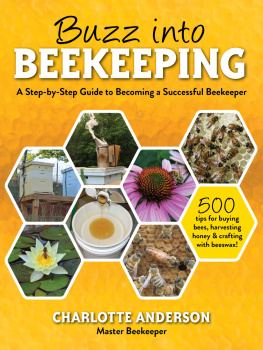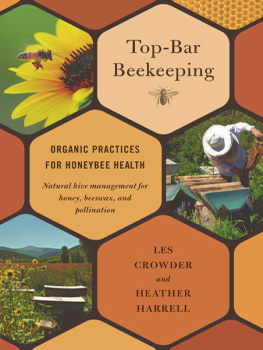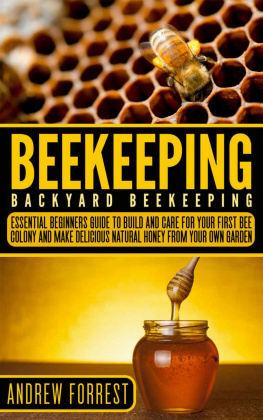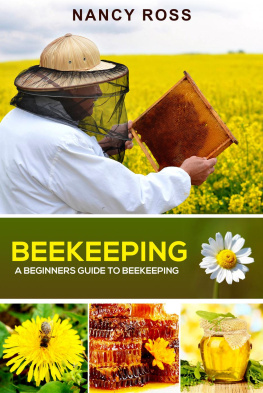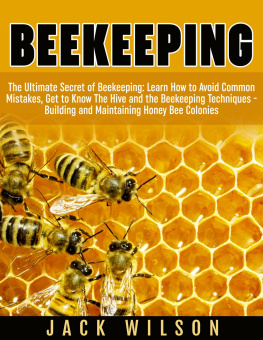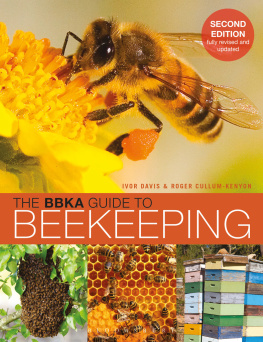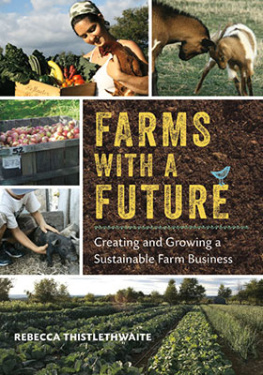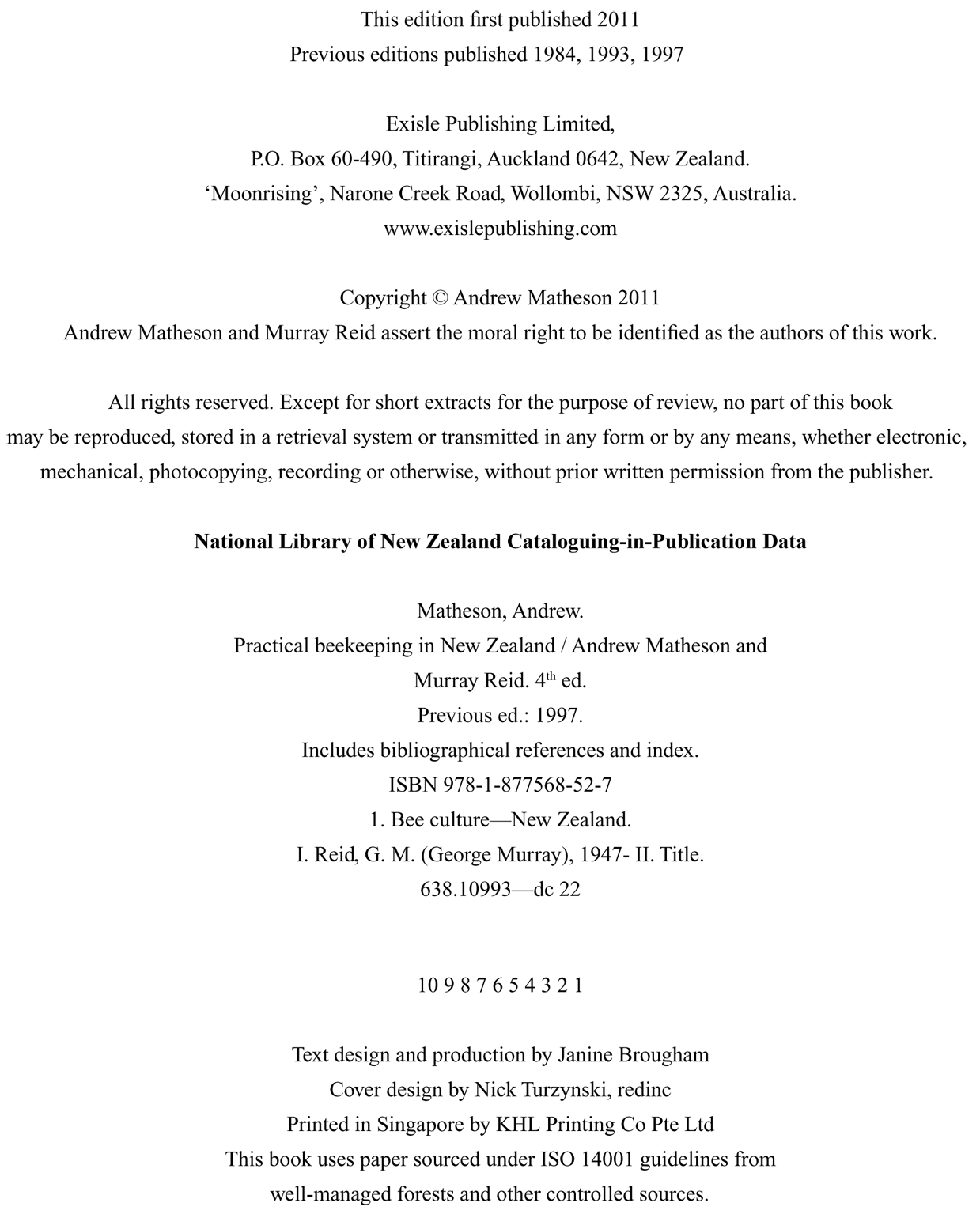
Acknowledgements
Two long-time colleagues critically reviewed the manuscript at the draft stageCliff Van Eaton scrutinised the entire text, and Mark Goodwin commented on the parasites, diseases and pests chapter. We are grateful for their contributions, though of course any errors or incorrect emphases in the final publication remain ours.
We are grateful to the following individuals and organisations for their generosity in allowing the use of illustrations in this book:
- Peter Bray, Airborne Honey: Figs 6.1, 13.35, 15.2, 15.3, 17.6.
- Trevor Bryant: Figs 4.2, 14.6.
- Collection of the late Vince Cook: Fig.2.9.
- Crown Copyright, courtesy of the Food and Environment Research Agency National Bee Unit: Figs 4.6, 4.7, 13.4, 13.17, 13.2813.30.
- Barry Donovan: Fig.4.18.
- Jane Lorimer, Hillcrest Apiaries: Fig.12.11.
- Jody Mitchell, Kaimai Range Honey: Figs 1.2, 2.4, 2.5, 4.11, 4.12, 11.2, 18.3.
- Mark Goodwin, New Zealand Institute of Plant and Food Research: Figs 2.8, 3.10, 3.16, 4.5, 4.8, 6.2, 12.8, 13.1, 13.3, 13.5, 13.6, 13.813.14, 13.16, 13.18 13.22, 13.2427, 20.2.
- Frank and Mary-Ann Lindsay, Lindsays Apiaries: Fig.3.14.
- Ministry of Agriculture and Forestry: Figs 20.4, 20.5, 20.6.
- Operationbee.org : Fig.4.16.
- Pdphoto.org: Figs 4.13, 4.14, 19.1.
- Collection of the late Herman Van Puffelen: Figs 4.3, 4.17.
- John and Helen Wright, South Auckland Apiaries: Fig.17.1.
Preface
Nearly three decades ago Practical Beekeeping in New Zealand was written to fill the need for a comprehensive and up-to-date handbook on New Zealand apiculture. It enjoyed wide success, not only in New Zealand but to a surprising degree with beekeepers in other temperate climates who were looking for a practical manual.
Over the years the title was revised twice to take account of changes in scientific knowledge and beekeeping practice. We have now collaborated to produce a fourth edition that is completely revised and reordered, especially to take account of the dramatic and irrevocable changes brought about by the presence in New Zealand of the parasitic mite varroa.
Our aim in writing this book has been to give practical guidance on hive management, and to offer an insight into New Zealand beekeeping practices. For those with no beekeeping experience, it will explain what is involved in becoming a beekeeper and describe the industry in New Zealand. If you already keep bees, the book will deal with all the steps involved in managing colonies throughout the year and how to handle hive products. For overseas readers, it will provide an insight into New Zealand apiculture.
Any book that gives a recipe for beekeeping is doomed to failure. A honey bee colony is a complex and dynamic organisation, and is subject to the normal variations of natural systems rather than to a calendar or rule book. It is essential to understand bees before you can keep them, and all through the book we have sought to provide the reasons for the techniques under discussion.
Practical Beekeeping in New Zealand has been written from our decades of experience as beekeeping tutors and apicultural consultants, and is a result of discussions with many people who wanted to find out what they should be doing with their bees, or how they could get involved with beekeeping. The book has benefited from the multitude of questions about the whys of beekeeping, as well as the hows.
While writing this fourth edition of the book we have received valuable assistance from colleagues who reviewed the manuscript, and generous provision of illustrations, which we have acknowledged separately. The book has also benefited from the ideas, suggestions and questions of colleagues in New Zealand and other countries, with whom weve had the privilege of working during our beekeeping careers.
Andrew Matheson
Murray Reid
Is beekeeping for me?
Beekeeping can be an immensely rewarding hobby, a source of guilt if you cannot give colonies the necessary attention at the right time, an expensive pastime, or a useful secondary source of income. Before getting into beekeeping you should think about what you want from it, and what you are prepared to put in.
People start keeping bees for many different reasons. Some simply enjoy honey and want to produce enough for their own needs. For many, a general interest in the honey bee or ecology prompts them to acquire hives. Others have economic reasons, and are attracted by the ideas of free honey or pollination, or a profitable sideline business.
BEFORE YOU START
Here are a few things you should think about before deciding whether to become involved in beekeeping.
Allergic reactions
It is impossible to keep bees without being stung. Even if you always wear a complete set of protective clothing, you will get stung from time to time. Being stung is always painful, and localised swelling and itching is common. Most people do become accustomed to frequent stings, and eventually experience only minor swelling and itching.
A few people, though, dont adjust in this way, and their reaction to stings may become increasingly severeinvolving swelling, itchiness and a rash away from the sting site, or even difficulty in breathing. If you have these allergic reactions, or have never been stung before, consult a doctor before deciding to take up beekeeping.
You also need to consider family members. Bees can remain in vehicles or come into buildings and sting the unwary, and venom is brought home on clothing and gloves.
Diseases and chemicals
Now that the parasitic mite varroa is well established in New Zealand, you have to actively keep bees and not merely have them. Honey bees cannot survive for long in the presence of varroa without human intervention, and this usually means applying some form of mite-control chemical several times each year. Untreated honey bee colonies will die.
Heavy work
Beekeeping is heavy work and requires good physical fitness. Boxes of honey may weigh up to 40kg when full (the same as a bag of cement). When lifting them you will be wearing cumbersome protective clothing, often lifting the boxes from the ground and using your fingertips in relatively small handholds. The heaviest lifting is also done at the hottest time of year. However, using three-quarter depth boxes reduces the weight a beekeeper must lift.
Shifting hives can be even more difficult and is generally a two-person operation, as a two-storey, full-depth hive can weigh 70kg or more, depending on how much honey it contains.
Timing
You must visit your hives regularly if they are to stay healthy and productive, and if you are to remain confident and satisfied with your beekeeping. The biggest workload is in spring, and it is also in spring that fine weather seldom seems to coincide with weekends. Certain critical beekeeping tasks must be carried out when colony conditions dictate, not at the beekeepers convenience.
Eyesight
Good eyesight is needed for finding queens, looking for eggs, and diagnosing brood diseases. If you need glasses to see things close up or in fine detail, be sure to wear them when working with hives.
Economics
Beekeeping equipment, sugar for feed and chemicals for varroa control are expensive, and keeping just a few hives can be a costly hobby. But one or two dozen hives should pay for themselves, and with anything over about 25 hives beekeeping starts to become more than a hobby.



